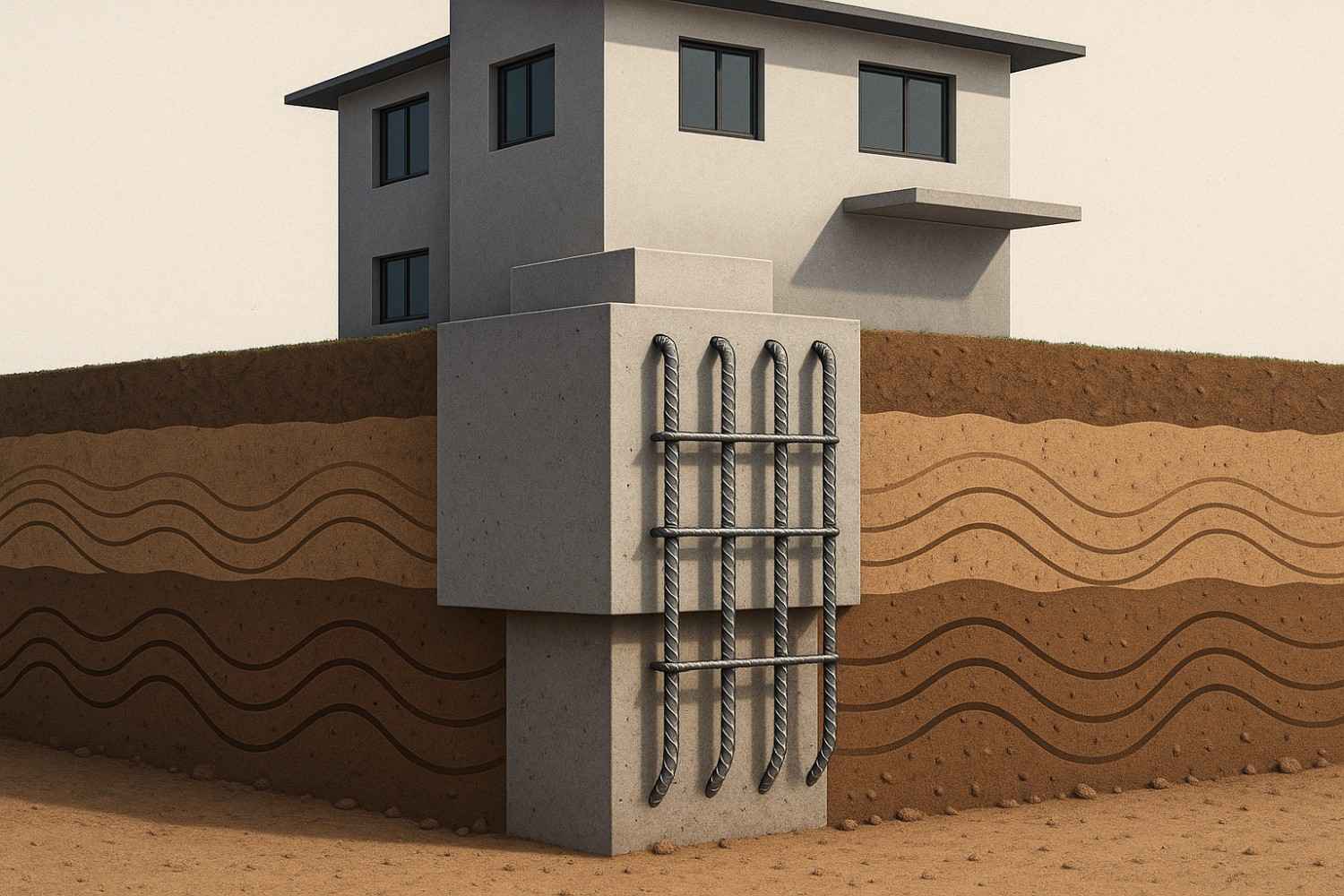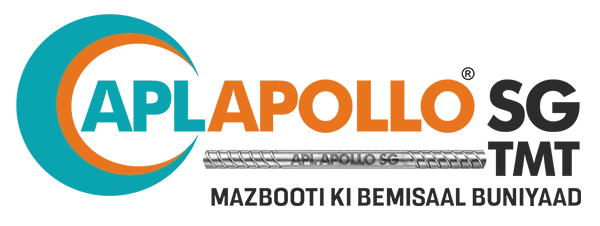
When we talk about earthquake-resistant construction, the spotlight often falls on structural steel and TMT bars. But beneath the visible frame, two silent partners – the soil and the foundation – work just as hard to keep your building standing when seismic waves strike.
In today’s guide, we explore how soil behavior, foundation type, and ductile reinforcement – particularly Fe 500D and Fe 550D TMT bars – interact to make a structure earthquake-resilient. Backed by examples from real Indian construction sites, we’ll show how this trio determines whether a building flexes or fails under stress.
- What Is Seismic Design?
Seismic design is more than just using stronger materials. It’s an engineering philosophy that aims to dissipate earthquake energy efficiently and safely – without catastrophic collapse.
It relies on a three-part interaction:
- Soil type (hard, soft, reclaimed, liquefiable, etc.)
- Foundation choice (raft, pile, isolated footing)
- Ductile reinforcement (high-elongation TMT bars)
When these elements work together, the structure can absorb seismic shock, shift without breaking, and protect lives. APL Apollo SG INFRA TMT Bars, especially in Fe 500D and Fe 550D, are tailored for these demanding roles due to their high ductility and elongation characteristics.

- Soil Behavior During Earthquakes
Soil is not static. During an earthquake, it can amplify seismic energy, lose bearing capacity, or even undergo liquefaction. These changes critically affect how forces travel to the foundation.
Let’s break down the typical responses:
- Soft Clay Soil: Absorbs seismic waves slowly but causes prolonged shaking. Needs ductile reinforcement for flexibility.
- Rocky/Gravelly Soil: Transmits sharp shocks quickly. Demands strong foundations and crack-resistant steel.
- Filled or Reclaimed Soil: Highly unpredictable. Requires deep soil analysis and robust reinforcement cages.

After the 2001 quake, buildings on similar designs showed drastically different performance – based purely on underlying soil. Those built on soft clay with proper ductile TMT reinforcement stood tall, while others crumbled.
- Foundation Types & Their Earthquake Role
Choosing the right foundation is a make-or-break decision in seismic zones.
Raft Foundations
- Spreads load across a large area
- Suitable for moderate soil conditions
- Needs ductile bars at edges to resist shear and overturning
Pile Foundations
- Ideal for weak or liquefiable soils
- Transfers loads to deeper, stable strata
- Must be paired with high-strength, flexible TMT bars like Fe 550D
Isolated Footings
- Common in residential projects
- Cost-effective, but sensitive to ground motion
- Requires precision tying with MS Binding Wire to prevent displacement
- Ductile Reinforcement: The Flexible Lifeline
The role of ductility in seismic zones can’t be overstated. During an earthquake, ductile TMT bars bend instead of snapping, allowing the structure to deform safely and release energy.
Fe 500D and Fe 550D grades are specially engineered for this:
- High elongation values for energy absorption
- Excellent bendability to accommodate ground shifts
- Corrosion resistance for long-term durability
That’s why APL Apollo SG INFRA TMT Bars are preferred in high-risk zones – engineered for resilience, not just strength.
- Real Site Example: Hill Construction in Dehradun (Zone IV)
In a recent villa project near Dehradun, engineers faced complex slope conditions. Pile foundations were chosen to anchor the building deep into stable strata.
To counter expected lateral earth pressures and shifting soil, APL Apollo SG INFRA Fe 550D bars were used. The reinforcement cages were detailed with extended lap lengths and tied securely with SG Strong Binding Wire.

- Soil-Structure Interaction (SSI): Bridging Two Worlds
Soil-Structure Interaction (SSI) examines how buildings and foundations influence – and are influenced by – the soil beneath during quakes. Neglecting SSI can lead to underestimated stresses and flawed designs.
With proper SSI modeling:
- Foundation stiffness is adjusted to match soil behavior
- Energy dissipation is better managed between soil and structure
- Reinforcement detailing becomes more accurate, reducing failure risks
Advanced tools like finite element analysis help engineers simulate real-time behavior, especially for high-rise and critical infrastructure projects.
- MS Binding Wire: The Unsung Hero
While TMT bars carry the load, MS Binding Wire ensures that the reinforcement cage holds its shape – especially during seismic jolts. Loose or weak binding can lead to internal dislocation, compromising structural performance.
SG Strong Binding Wire from APL Apollo SG stands out for:
- High ductility
- Superior rust resistance
- Strong grip under stress
It’s a small investment with a big impact, especially when forming cages for footings, columns, and pile caps in seismic zones.
- What the Codes Say (IS 456 & IS 1893)
Indian building codes are clear: seismic detailing is not optional in earthquake-prone areas.
According to IS 456 and IS 1893 (Part 1):
- High-ductility TMT bars are mandatory in Zones III, IV, and V
- Stirrups and joints must follow seismic-specific detailing
- Soil analysis is required before finalizing the foundation type
APL Apollo SG INFRA products are code-compliant, saving builders time during design approvals and inspections.
- Cost vs. Safety: Make the Right Call
Yes, TMT rod price and steel rate per kg are important considerations. But in seismic design, cutting corners on material grade can cost lives – and lead to massive repair or retrofit expenses later.
Investing in Fe 500D/Fe 550D TMT bars, quality binding wire, and soil-appropriate foundations ensures long-term stability and peace of mind.
- Final Takeaway: Don’t Design in Isolation
Earthquake resistance isn’t built with TMT bars alone. It’s a collaborative design effort between geotechnical engineers, structural designers, and quality materials.
- Soil affects how ground motion is transmitted
- Foundations distribute and absorb that motion
- Ductile reinforcement ensures the building moves safely with it
Neglect one, and the system falters.

Talk to our experts or find a certified SG INFRA distributor near you → Contact Us / Locate Dealers




Pingback: Understanding Cover Blocks in RCC – Their Role with TMT Bars & Binding Wire
Pingback: Ribbed TMT Bars - Why Bonding Strength Matters in RCC Structures